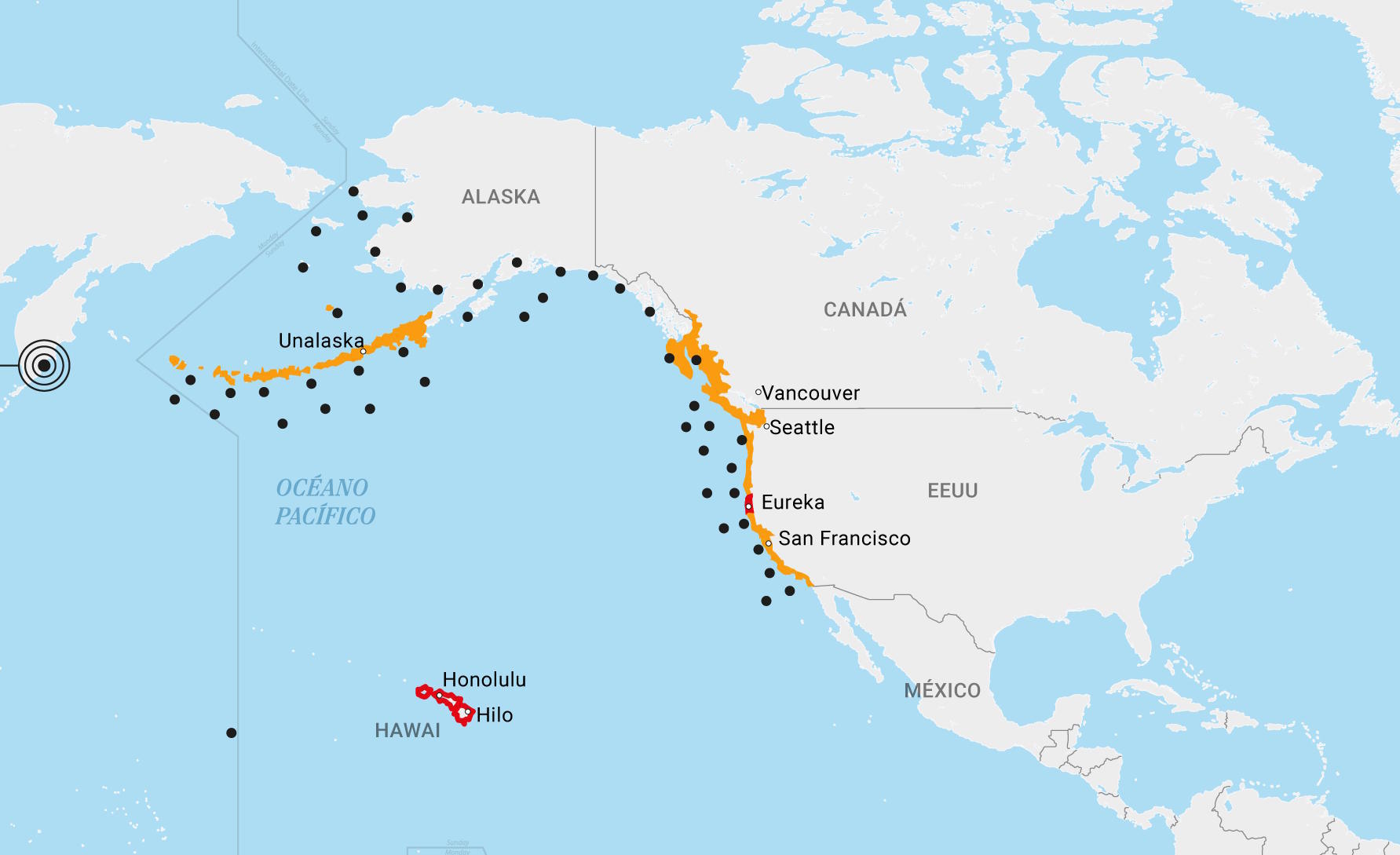The rain is deafening, and the wind roars relentlessly, twisting in gusts that shake the beams of old buildings with a continuous roar, as if the sky itself were tearing apart. In the streets, the water already covers up to the ankles. Chinese media explain that a typhoon has reached Shanghai, and thousands of people are being evacuated and moved to safe places. On mobile phones, text messages from municipal authorities begin to arrive, warning that the meteorological agency has raised its storm alert level. Suddenly, another even more serious alarm arrives: waves of over a meter are expected on the eastern coast of China after a powerful magnitude 8.8 earthquake hit the Russian Kamchatka Peninsula.
The tsunami alert falls on Shanghai and its neighboring province, Zhejiang. The financial capital faces a double threat, although residents are more concerned about not drowning with the arrival of Typhoon Co-May. The storm shows no mercy. Over 280,000 residents of the Pudong district, east of the Huangpu River that divides the city in two, have been relocated to 1,900 shelters scattered throughout this mega city where 27 million people live. Most of the evacuees are elderly people who will spend the night in sports centers, shopping malls, or gyms converted into makeshift camps.
More serious videos were recorded by the Japanese who took refuge on the rooftops of coastal areas in Hokkaido, an island famous for its volcanoes, natural parks, and earthquake and tsunami alerts that reach mobile phones. In Hokkaido, which is within the known as the Ring of Fire, the place with the highest seismic activity in the world, the first waves arrived after the earthquake in Kamchatka. But the composed Japanese have a well-studied manual for the arrival of a tsunami.
"We are prepared for an extended stay. We already received more than 1,000 people here during the devastating tsunami of March 2011," explained the abbot of a Buddhist temple located on a mountain overlooking Kamaishi, in Iwate Prefecture. Less accustomed to these scares are the residents and tourists of Hawaii, where alerts to seek high ground due to the arrival of large waves caused chaotic scenes on the roads.
Russia, Japan, China, the United States, the Philippines, Indonesia, Taiwan, Chile, Peru, Ecuador, Mexico, Panama, Guam, Pau, Tonga... Many countries issued alerts and evacuation orders after the most powerful earthquake in over a decade.
It has been a catastrophe that traveled back in time, at least in the basic sense of the calendar. The earthquake struck a remote area of the eastern tip of Russia at 11:24 local time on Wednesday. When the first waves reached Hawaii, several hours later on the same day and after crossing the international date line, it was just after 7:00 p.m. on Tuesday there.
The penultimate day of July for some; the antepenultimate for others. All those affected have suffered the consequences of one of the largest earthquakes ever recorded and a tsunami that traveled over 6,000 kilometers. In the early hours of California, when the first big waves began to appear, it was dinnertime in Severo-Kurilsk, the Russian city closest to the epicenter that was partially submerged after the arrival of waves that reached up to five meters.
